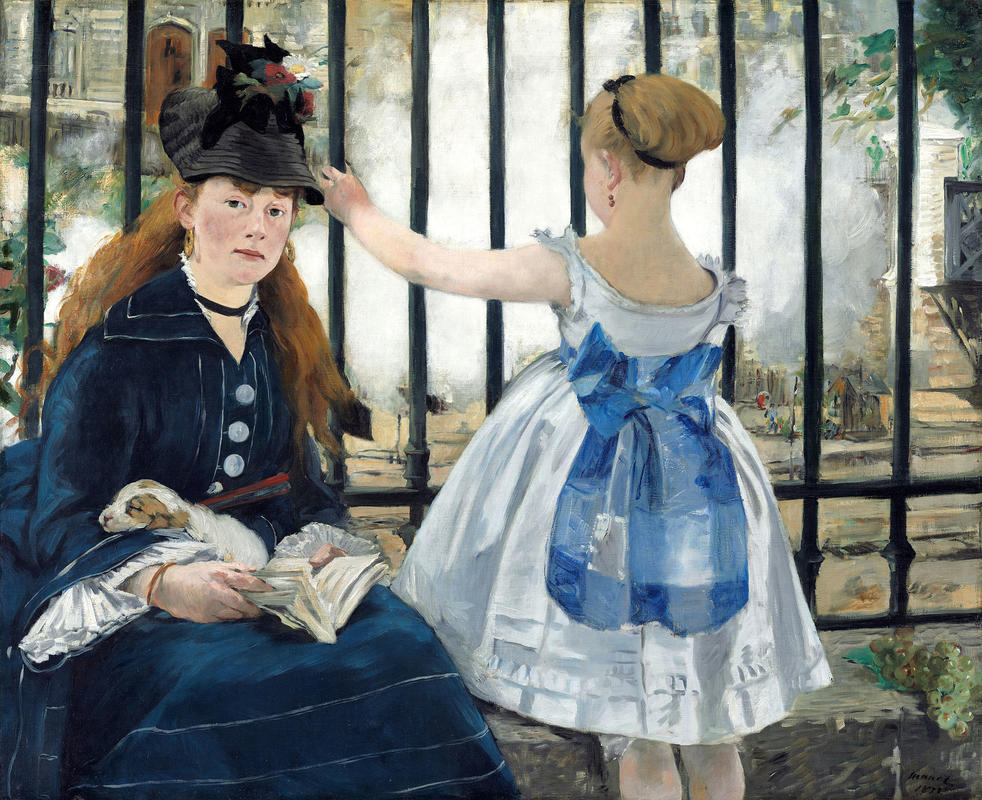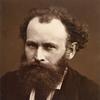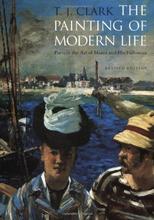More about The Railway
- All
- Info
- Shop

Sr. Contributor
Édouard Manet paints a train in The Railway without even painting a train.
Apparently art critics in 1874, when this was exhibited at the Paris Salon, didn’t really understand one of the best things about art… it doesn’t have to be literal. They criticized the piece for lacking a cohesive composition, using mundane subject matter, and not depicting an actual train. In other words, they missed Manet’s train of thought.
The piece is meant to represent a snapshot of modern Parisian life in the 1870s; normal looking people, doing normal things, surrounded by technology that has become, well, normal. The piece may be titled The Railway but the fact that it shows nothing more than a puff of smoke to indicate the train’s presence signifies how ingrained such industry had become. In other words, The Railway is meant to be the background and not the focus of modern life. Note: if you replace “railway” with “smart phone,” the last sentence will make boring ol’ art relevant to you!
Victorine Meurent had posed for Manet many times before this painting, inspiring what is arguably his most famous work, Olympia. As Olympia indicates, Victorine was not afraid to bare it all and was as modern a woman as the train was a machine. Despite painting her as a prostitute in several works and later encouraging (or at the very least not discouraging) his friends from promoting her reputation as an alcoholic street-rat, there is no evidence to suggest that Victorine ever sold herself for money.
The daughter of artisans, Victorine had ambitions to become an artist and thusly at age 16 began modeling for painter Thomas Couture who gave her art lessons. She started modeling for Manet in 1862, presumably meeting him through Couture, and continued to do so until this piece was completed. Though no one is 100% sure why the two fell out of each other’s favor, rumors abound that by 1879 she had been completely ousted from his group after a participating in some ill-advised love affairs. I think it more likely that Manet, who preferred showing in the Salon over all other venues, was upset that her work was accepted into the 1876 exhibition while his was rejected. Boohoo, her boobs helped make your career, bro.
The Railway was purchased by Opera baritone Jean-Baptiste Faure who was super hip and liked Manet way before he was cool. Seriously, he owned a total of 67 Manet’s, buying up pieces such as Dejeuner Sur L’Herbe (now considered a masterpiece) when no one else would. Interestingly, Faure refused to buy a portrait Manet painted of him dressed as the lead in Ambroise Thomas’ Hamlet. Maybe he didn’t want to be immortalized in tights? The painting was eventually sold to the Havemeyer’s: a wealthy family with a sugar business and a sweet tooth for art! This piece must have been special to the family because when Mrs. Havemeyer passed away in 1929, she gave over 2,000 paintings to the Met specifying only a small group of pieces, including this one, be kept with the children.
Featured Content
Here is what Wikipedia says about The Railway
The Railway, widely known as Gare Saint-Lazare, is an 1873 painting by Édouard Manet. It is the last painting by Manet of his favourite model, the fellow painter Victorine Meurent, who was also the model for Olympia and the Luncheon on the Grass, among other paintings by Manet. It was exhibited at the Paris Salon in 1874 and donated to the National Gallery of Art in Washington, D.C. in 1956.
Check out the full Wikipedia article about The Railway














